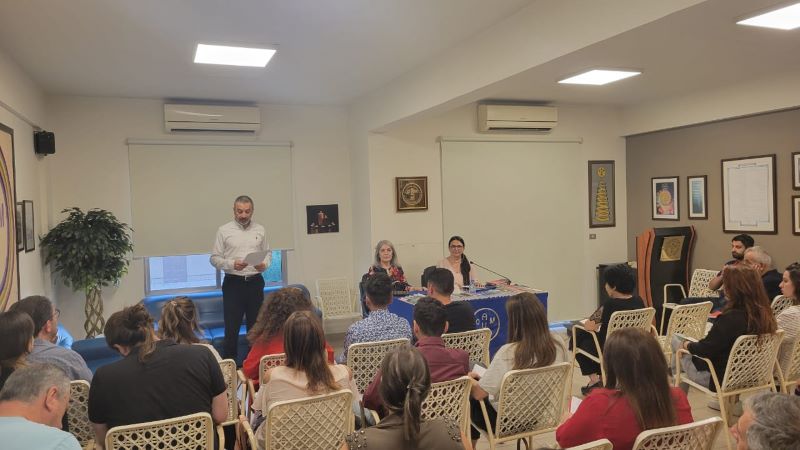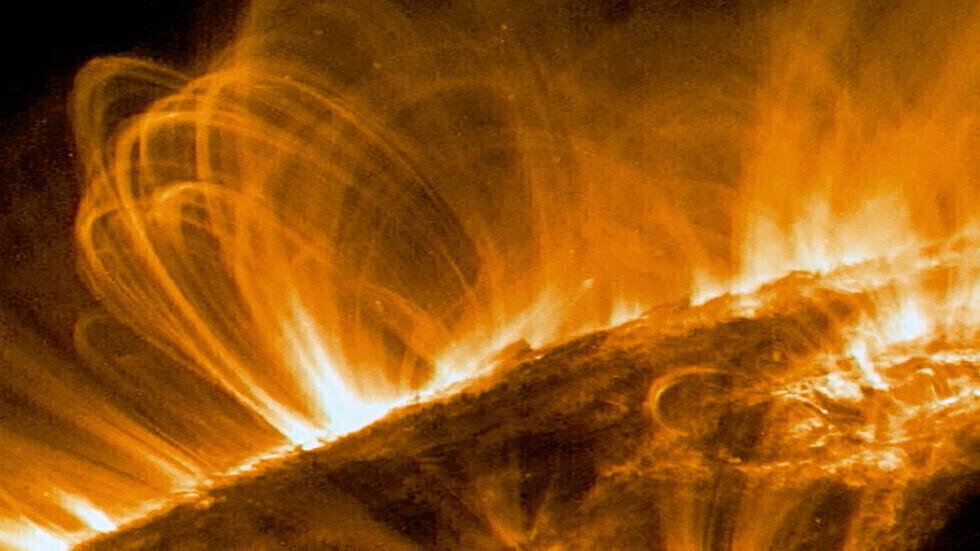
كشف مرسام الطيف في مسبار "روزيتا" الذي أطلق إلى الفضاء لدراسة المذنب 67P / Churyumov - Gerasimenko، توهجا فريدا للأشعة فوق البنفسجية حوله.
وتفيد مجلة Nature Astronomy، بأن العلماء يعتقدون، أن طبيعة هذه الظاهرة هي مماثلة لطبيعة ظاهرة الشفق القطبي على الأرض.
وقد اكتشف علماء معهد البحوث الجنوبي-الغربي (SwRI) في الولايات المتحدة المختصين بتحليل بيانات مرسام الطيف ALICE المثبت على المسبار "روزيتا"، ظاهرة غير اعتيادية، انبعاثات شفقية، تشبه الشفق القطبي، خارج الطيف المرئي.
وكما هو معلوم، يتكون الشفق القطبي على الأرض، عندما تتجه دقائق الشمس المشحونة نحو قطبي الأرض بواسطة المجال المغناطيسي للأرض، وهناك تصطدم مع الذرات والجزيئات في الغلاف الجوي للأرض مكونة الشفق القطبي.
ويلاحظ الشفق القطبي في العديد من الكواكب والنجوم والأجسام الصغيرة حتى التي ليس لها مجال مغناطيسي مثل المذنب تشوريوموف-غيراسيمنكو. وطبيعة تكون الشفق هي نفسها في جميع الأماكن.
وينشأ الشفق حول المذنب نتيجة تفاعل دقائق الرياح الشمسية المشحونة مع الغازات المحيطة بنواة المذنب الذي يتكون من الغبار والجليد. وقد سمح جهاز كشف الأيونات والالكترونات في مرسام الطيف باكتشاف الشفق حول المذنب. Voir cette publication sur Instagram
And Rosetta keeps giving ☀️☄️🛰 ⠀⠀⠀ Our Rosetta mission has revealed a unique kind of aurora, an exciting phenomenon seen throughout the Solar System, at its target comet, Comet 67P/Churyumov-Gerasimenko. ⠀⠀⠀ At Earth, auroras form as charged particles from the Sun interact with our planet’s magnetic field to create shimmering displays of colour and light in the high-latitude sky. While these light displays have been seen at various planets and moons in the Solar System, and around a more distant star, observations from our comet-chasing Rosetta mission now reveal unique auroral emissions at the spacecraft’s target comet: 67P/Churyumov-Gerasimenko (67P/C-G). ⠀⠀⠀ These emissions are created as charged particles stream towards the comet from the Sun – a flow known as the solar wind – and interact with the gas surrounding the comet’s icy, dusty nucleus. ⠀⠀⠀ These processes define how the envelope of gas (or coma) around 67P/C-G becomes excited – that is, made to glow – and how the particles causing this excitation are given a boost of energy and sped up. 67P/C-Gs aurora shows up in ultraviolet light, as seen in martian auroras detected by our Mars Express (although the ‘colours of the auroras at 67P/C-G and Mars differ). ⠀⠀⠀ The ultraviolet emissions Rosetta observed at comet 67P/C-G have shown up before, and were thought to be ‘dayglow’, a process caused by solar light particles (photons) interacting with cometary gas. ⠀⠀⠀ However, this study shows that these emissions are aurora instead: they are driven not by photons, but by electrons in the solar wind that have been accelerated in the comet’s nearby environment. ⠀⠀⠀ Exploring the emission at 67P/C-G will enable scientists to assess how the particles comprising the solar wind change over time, something that is crucial for understanding space weather throughout the Solar System. ⠀⠀⠀ Go to esa.int to learn more. ⠀⠀⠀ 📸 @europeanspaceagency / Rosetta / NavCam – @creativecommons CC BY-SA 3.0 IGO⠀⠀⠀ 🖥 @europeanspaceagency (spacecraft: ESA/ATG medialab)
Une publication partagée par ESA (@europeanspaceagency) le 21 Sept. 2020 à 8 :56 PDT
ويقول الدكتور جويل باركر من المعهد، المشرف على مشروع ALICE، "اعتقدنا أول الأمر أن التوهج حول المذنب 67P هو "ضوء النهار" الذي ينتج من تفاعل الفوتونات الشمسية مع غازات المذنب. وكانت المفاجأة عندما اكتشفنا أن الأشعة فوق البنفسجية، هي الشفق القطبي الذي تسببه الإلكترونات وليس الفوتونات في الرياح الشمسية، التي تشطر الماء وجزيئات أخرى وتتسارع في الوسط المحيط بالمذنب".
ويواصل الخبراء تحليل البيانات التي أرسلها المسبار "روزيتا" بعدما انتهت مهمته عام 2016 على أمل تحقيق اكتشافات جديدة.
المصدر: نوفوستيتابعوا RT على










